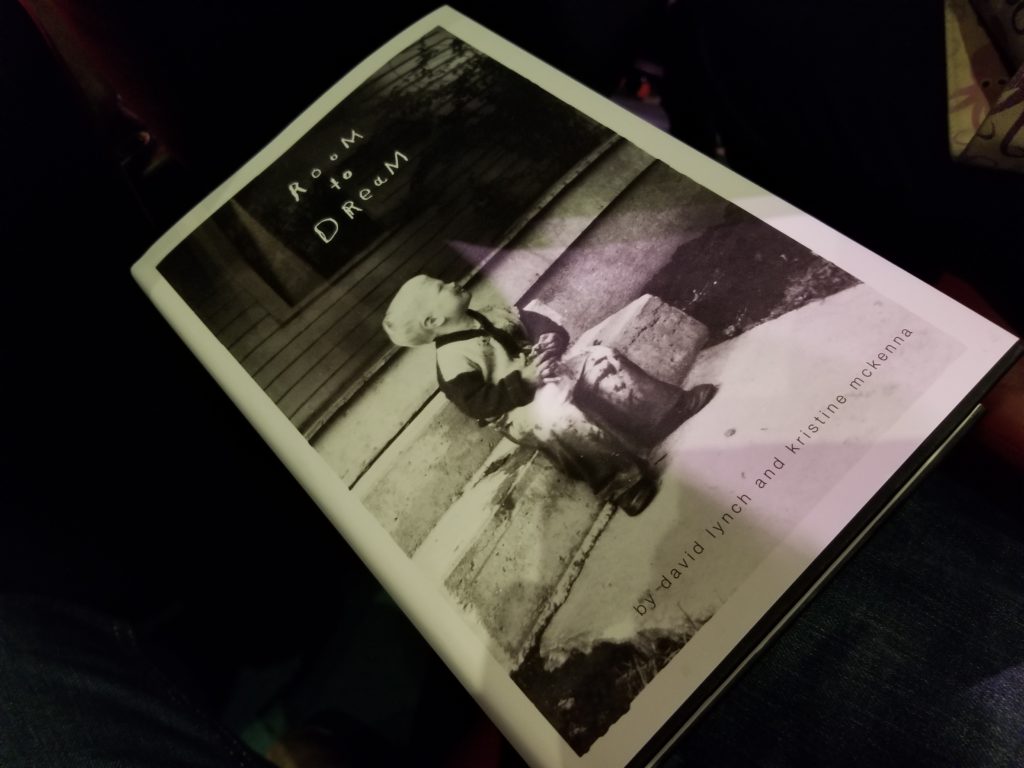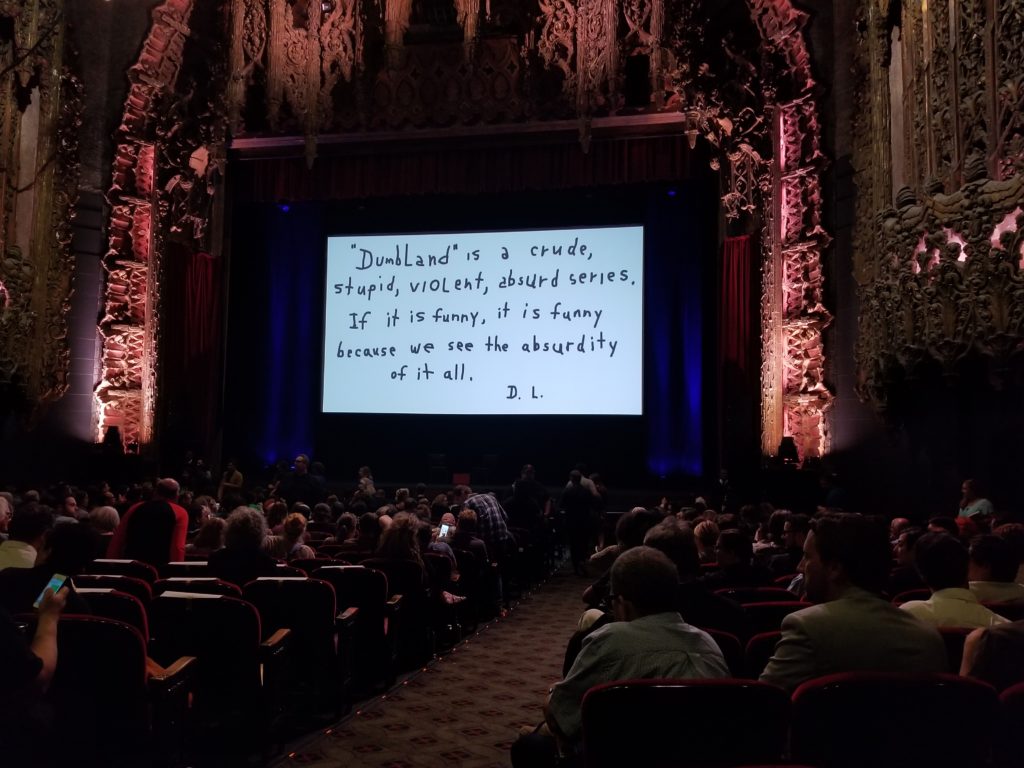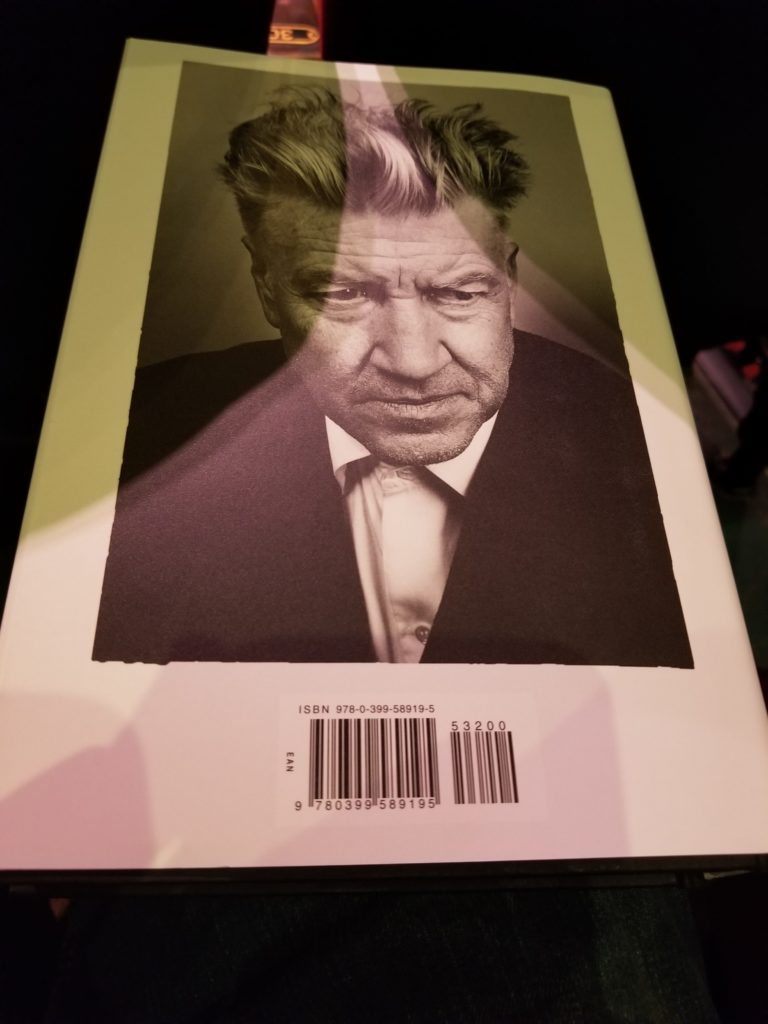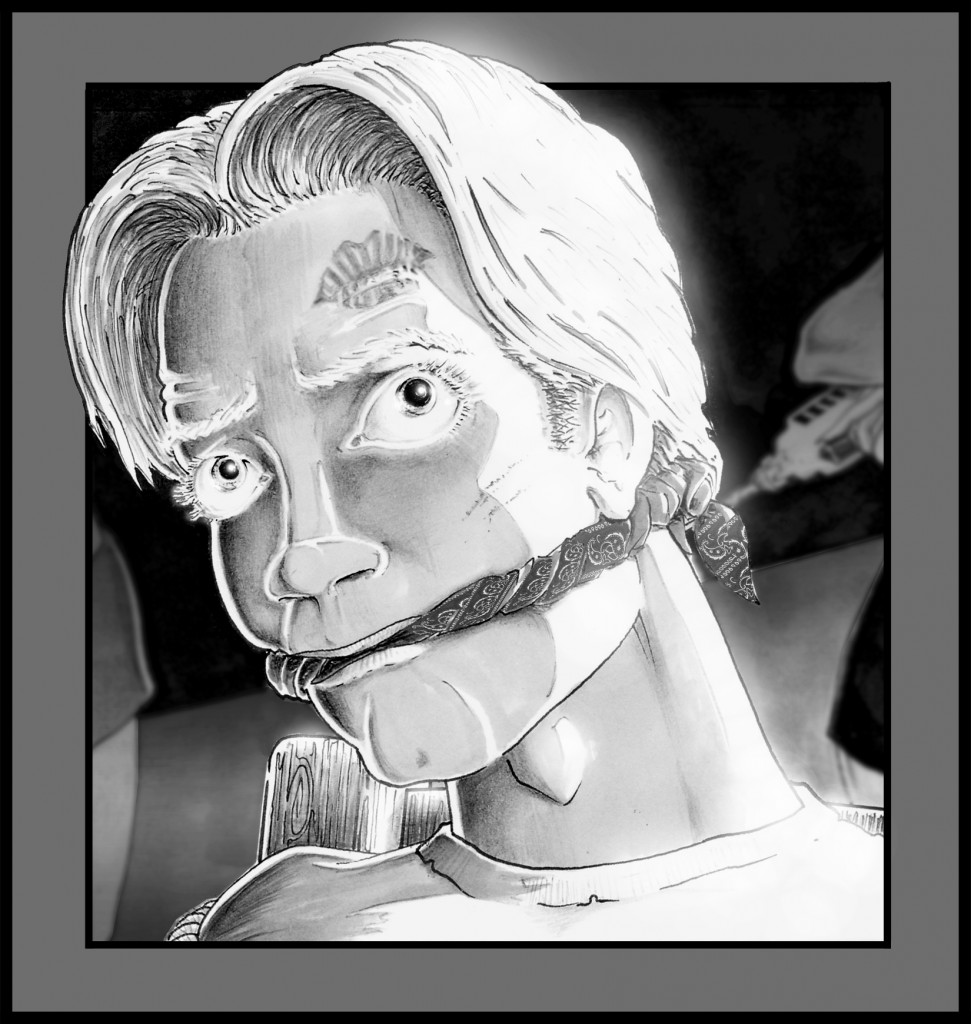
My mistake, I suppose, was expecting a conventional book tour interview.
This was David Lynch after all, the guy who’s given us the Lady in the Radiator, Frank Booth, and those miniature demonic grandparents who slip under apartment doors.
The setting was perfect. It’s hard to beat the cavernous decadence of The Theatre at Ace Hotel, originally built in 1927, the “former flagship movie house of United Artists.”
But then the lights went down and the evening started with all 8 episodes of Dumbland, Lynch’s crudely drawn and animated web series about a brutish mouth-breather (literally), his traumatized wife, and their hyperactive son in the suburbs. This is David Lynch’s suburbs, however, so a neighbor is a man with a removable arm who has sex with ducks, ants do a song-and-dance number calling attention to the main character being a “dumbturd,” and another character has the stick caught in his mouth removed by way of his eye sockets. It’s funny in a punishing way. To me, the series is more a testament to Lynch’s genius with sound design, which he employs to great unsettling effect.

Still, my heart sank a little because these events don’t usually run very long and the “Dumbland” screening ate up over half an hour. I was not encouraged, then, when Kristine McKenna, moderator and co-author of Lynch’s new hybrid memoir-biography, said she wasn’t going to ask him anything about the book. Instead, she had a few questions about “Summer,” as in the season, the first day of which is when this talk took place.
Okay, all right, I could go with this. Lynch is too interesting a person not to have something intriguing to share. He doesn’t like summer vacations. His ideal day is waking up refreshed, having a cup of coffee, doing some meditation, and then getting to work on a project, which can mean a painting, a film, or just daydreaming. He compared phones to sugar, meaning they’re as hard to give up as a “bag of really good cookies.”
That portion lasted about 10 minutes and then it was time for audience questions, which were submitted prior to the start of the program. Most of them concerned Twin Peaks, with one question prompting him to tell the story of how the pivotal character of Bob was inspired by set dresser/actor Frank Silva being in the “wrong” place at the right time. Another got him to reveal that he’d written and abandoned a film adaptation of Kafka’s The Metamorphosis. An inquiry into his recurring dreams had him describing one where he’s in the desert watching his approaching father become distorted by the waves of heat coming off the sand, and not knowing whether this was his “good” father or his “bad” father. Later in the dream he’s hiding at the very top of a marble structure listening to the footsteps below, presumably one of the fathers looking for him. The best question was “How do you keep your hair up?” Smiling slyly, Lynch replied, “I have a heart-to-heart talk with it every morning.”
Good stuff, I thought, but then it was all over, six audience questions answered in 20 minutes. And the long, long, long line for the book signing still awaited……which I admit I abandoned.
Sure, I was disappointed. Not so disappointed I was going to cut off someone’s ear so Kyle Maclachlan could find it in a field later. No.
But look, I love Lynch’s movies and how his mind works. He’s a master of mood, of atmosphere, of residing very comfortably in that often discomfiting zone between dreaming and waking life. I do find him inspiring and an influence on my writing. I just wanted more time with the guy.
Hey, at least I have the book, Room to Dream, which I must say is pretty impressive in its depth and breadth. We’re cautioned that answers to the puzzles that are Lynch’s art do not reside here, but that’s fine, I’m not looking for answers. I just find him, the work, and his creative process fascinating and stimulating. If books are where I have to go to access that as well as the perspectives of his family members and creative collaborators, there are worse places to look. I mean, imagine being inside Kenneth McMillan’s Baron Harkonnen fat suit.



